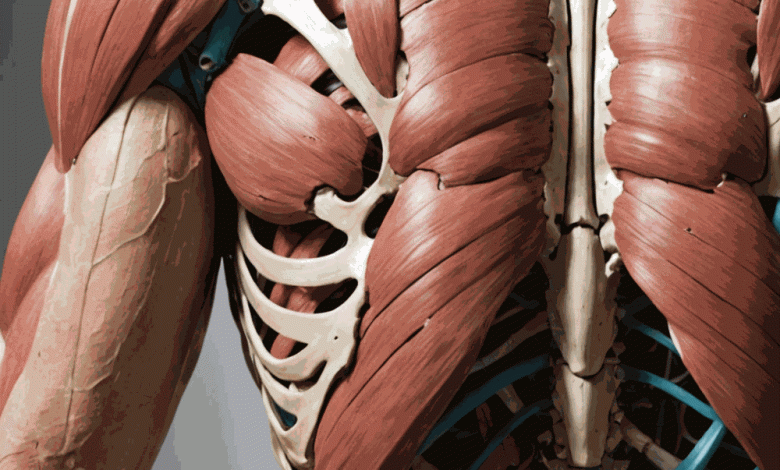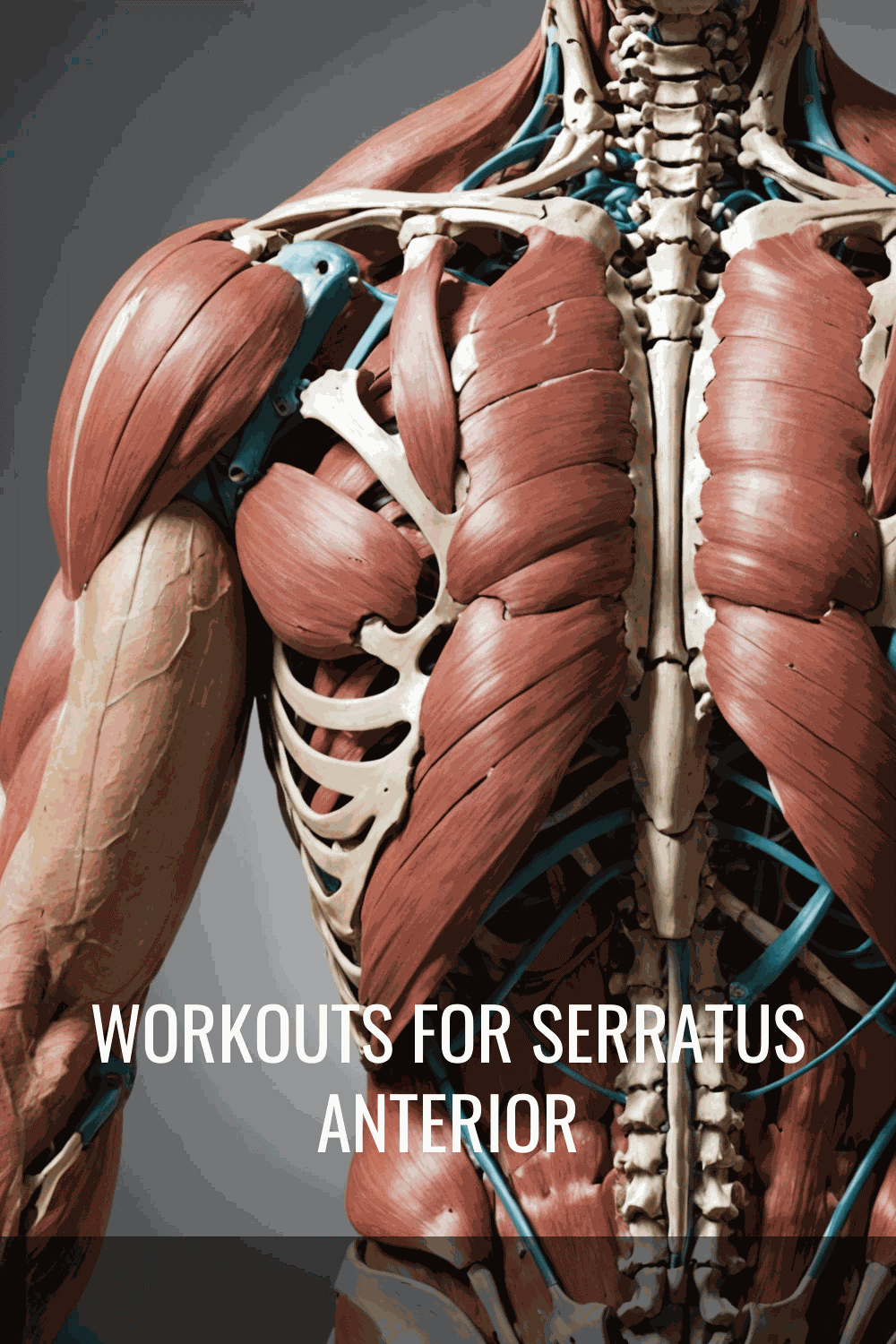Workouts for serratus anterior : Importance, Benefits, and Best Exercises

Workouts for serratus anterior muscle. What exactly is it, why is it important, and what are the best exercises to target this muscle? Let’s dive in!
1. Introduction: Understanding the Serratus Anterior
The serratus anterior muscle originates from the outside aspect of your first nine ribs and attaches to the anterior surface of the medial border of your scapula or shoulder blade. Its primary actions are protraction and upward rotation of the scapula. But why should you care about this muscle? Let’s find out!
2. Importance of the Serratus Anterior Muscle
Exercises targeting the serratus anterior can be beneficial for various shoulder issues. The exact reason behind this is not crystal clear, but there are a few possibilities. By strengthening the muscle, you improve your awareness of shoulder blade movement and add more variability to your training. Additionally, these exercises may temporarily remove aggravating movements, allowing sensitive tissues to calm down. In any case, doing these exercises can yield several key benefits.
3. Benefits of Targeting the Serratus Anterior
When you perform exercises that target the serratus anterior, you can experience the following benefits:
- Increased shoulder capacity and improved tolerance to overhead movement, which is especially helpful when experiencing shoulder pain.
- Enhanced awareness and potential movement of the shoulder blades.
- Improved aesthetic look in the targeted area.
Now that you know the benefits, let’s move on to choosing the right exercises!
4. Exercise Selection: Scapular Protraction and Upward Rotation
Scapular protraction exercises are common when targeting the serratus anterior. However, incorporating exercises that involve scapular upward rotation is vital for maximizing activation. One study revealed that exercises promoting upward rotation of the scapula activated the serratus anterior more than exercises solely focused on scapular protraction. Therefore, the best exercises for targeting the serratus anterior will include a combination of scapular protraction and upward rotation. Let’s now explore some of these exercises in detail!
5. Exercise 1: Uppercut
Start by holding a dumbbell with your elbow flexed. Reach your arm up and across your body, focusing on bringing your shoulder blades out and around you with each repetition. This exercise activates the serratus anterior while minimizing upper trapezius involvement, making it an excellent option for those with neck sensitivities or looking to reduce upper trapezius contribution.
6. Exercise 2: Dumbbell Arm Raises
Hold a dumbbell with your thumb up and reach your arm overhead, keeping the elbow straight. Slowly control the descent back down and repeat. Studies have shown that lifting the arm to at least 120 degrees of elevation activates the serratus anterior more than lower angles. Consider elevating the arm even higher to maximize activation, such as 150 degrees or fully overhead. The direction of arm movement (flexion, abduction, or scaption) does not significantly impact serratus anterior activation.
7. Exercise 3: Push-Up Plus to Downward Dog
Begin in a tall plank position and pull your shoulder blades together under control. Then, press the ground away from you, maximally separating your shoulder blades at the top. Sit your hips back, moving your arms overhead, and maintaining straight elbows. Transition back to the tall plank position with shoulder blades still maximally protracted. Slowly pull your shoulder blades back together and repeat. Remember to focus on pressing the ground away from you during transitions to maintain scapular protraction.
8. Exercise 4: Push-Up Plus to Dolphin Pose
This exercise is similar to the previous one but performed on your forearms instead of your hands. By keeping your forearms parallel, you can maintain externally rotated shoulders, which might help activate the serratus anterior. Again, focus on pressing the ground away from you throughout the movement.
9. Exercise 5: Wall Slide
For this exercise, place your hands inside a pillowcase and grab the inside corners. Rotate your hands outward, and with your forearms on the wall, slide your arms up as far as possible while maintaining good technique. Pull your arms back down and repeat. By pushing the wall away from you as you slide up or bringing your shoulder blades out and around you, you maximize scapular protraction and upward rotation.
10. Alternative Exercises: Building up to Overhead Movement
For individuals who find elevating the arm overhead uncomfortable, here are a few additional exercises that can help you build up to that movement.
11. Exercise 6: Banded Punch
Anchor a band behind you and hold your arm at about a 90-degree angle with straight elbows. Punch or reach the arm forward, moving the shoulder blade into maximal protraction under control. Pull the shoulder blade back towards the spine, then repeat. As you increase the arm angle, lower the anchor to facilitate scapular upward rotation.
12. Exercise 7: Dynamic Hug
Take a band and wrap it around your back. Reach your arms out and toward each other, mimicking a hugging motion, to maximally separate your shoulder blades. Control the movement back, bringing your shoulder blades together, and then repeat.
13. Exercise 8: Push-Up Plus
While incorporating shoulder elevation, such as in the downward dog variation, is more optimal, doing a push-up plus can still be an effective closed-chain scapular protraction exercise. Start in a tall plank position, pull your shoulder blades together under control, then press the ground away from you to maximally separate your shoulder blades, keeping your elbows straight. Pull your shoulder blades together and repeat.
14. Other Shoulder Movements: Overhead Press and Push-Ups
It’s important to note that other shoulder movements like overhead pressing and push-ups also engage the shoulder blades in a similar motion. These exercises activate the serratus anterior and allow for greater ranges of motion, strengthening the muscles around the scapula, arms, and trunk. The overhead press promotes upward rotation and protraction of the scapula, while the end phase of the push-up emphasizes scapular protraction.
15. Incorporating Serratus Anterior Exercises into Your Program
When it comes to integrating serratus anterior exercises into your workout routine, two scenarios can guide your approach:
First: If you have shoulder discomfort and cannot currently tolerate high volumes or intensities of other shoulder exercises, choose one to two exercises from the previous list and perform them three to four times a week.
Second: If you already incorporate overhead pressing, push-ups, and other exercises but want to supplement your training, choose one to two exercises from the previous list and implement them one to two times a week. This can help improve scapular awareness and enhance the aesthetic look of the targeted area.
16. Conclusion: The Benefits of Serratus Anterior Exercises
Incorporating exercises that target the serratus anterior can be advantageous in certain cases. However, compound exercises like overhead pressing and push-ups are generally sufficient as they activate the serratus anterior and other muscles of the upper extremity. Choose exercises based on your goals, consider any discomfort, and gradually progress in accordance with your fitness level.


